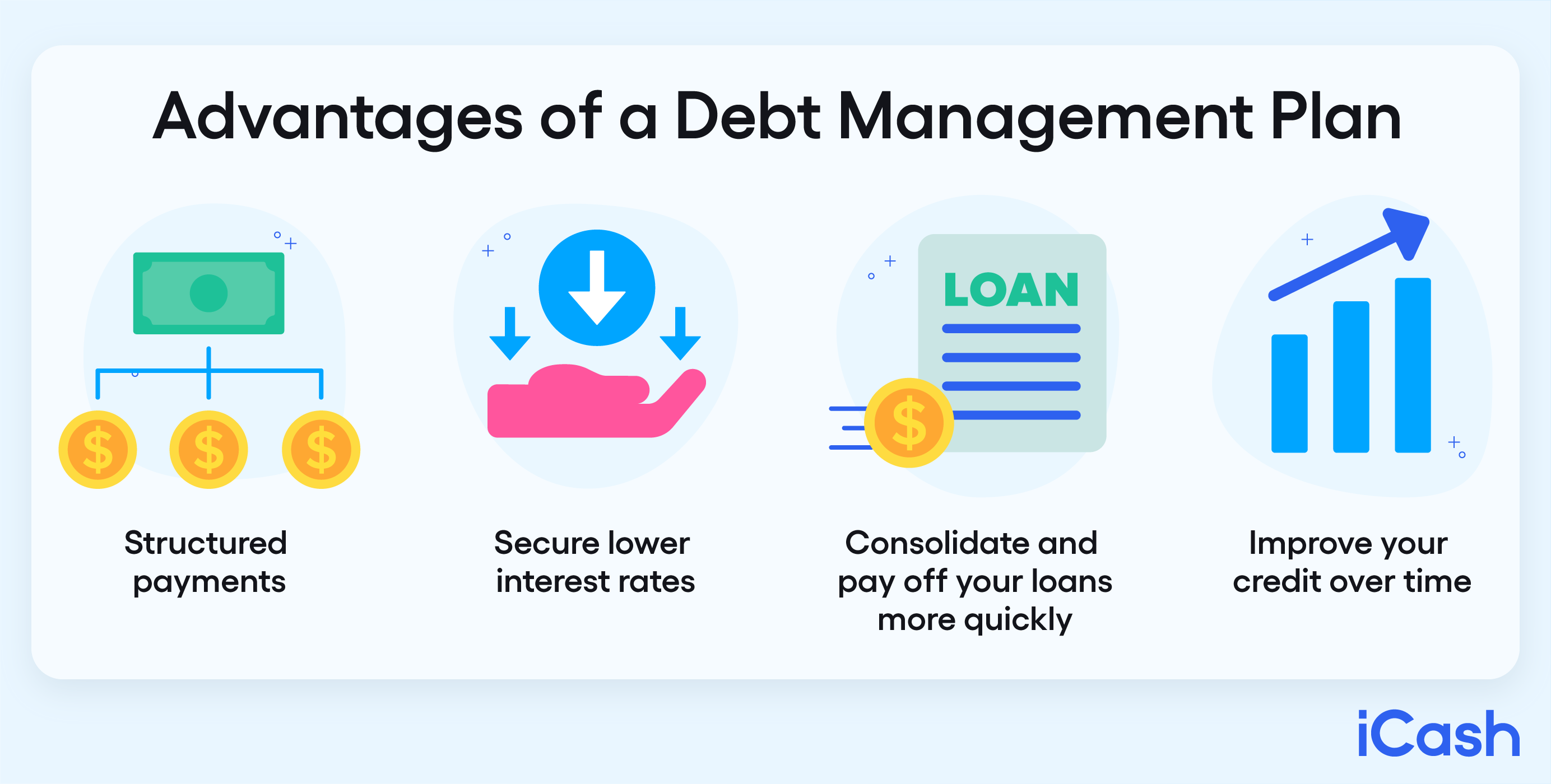Whatever You Need to Learn About Developing a Personalized Financial Obligation Monitoring Plan
In the world of individual financing, designing a customized debt management strategy is usually the keystone of accomplishing economic security and assurance. By diligently assessing your current economic obligations, setting attainable monetary goals, and crafting a sensible budget, you lead the way for effective debt repayment approaches. However, the journey to monetary freedom is not exclusively concerning preliminary planning; it likewise needs recurring tracking and changes to guarantee ongoing progress. As you navigate the complexities of developing a tailored financial debt monitoring plan, understanding the complexities of each action is crucial to your financial success.
Assessing Your Present Financial Obligation Circumstance
One need to first conduct a comprehensive examination of their current financial debt commitments prior to formulating a reliable financial debt administration plan. Examining your present debt scenario is an important initial step in acquiring control of your funds. Begin by gathering all required monetary files, such as charge card declarations, financing arrangements, and any kind of outstanding bills. Develop a breakdown of each financial debt, including the overall quantity owed, rates of interest, minimal regular monthly payments, and due days. This extensive overview will supply a clear image of your monetary standing and help focus on which debts to attend to initially.
After assembling this information, calculate your complete debt-to-income ratio by separating your regular monthly financial debt payments by your monthly income. This proportion is a crucial indication of your capability to handle current debt degrees properly. Additionally, examine your credit rating record to identify any type of errors or inconsistencies that may be impacting your credit scores rating. Understanding these facets of your economic circumstance will direct you in establishing a customized financial obligation monitoring strategy customized to your particular requirements and objectives.
Setting Financial Goals and Targets

When establishing economic goals, it is essential to be details, measurable, attainable, appropriate, and time-bound (CLEVER) For example, you might establish an objective to settle a specific quantity of financial debt within a specific time framework, such as lowering your bank card equilibrium by $5,000 in the next 12 months - More Discussion Posted Here. By setting clear targets such as this, you can track your development and remain encouraged to achieve your financial debt management purposes
Additionally, take into consideration prioritizing your debts based on variables such as rates of interest, exceptional equilibriums, and repayment terms. By concentrating on high-interest debts initially, you can conserve money over time and accelerate your trip towards financial flexibility. Remember, everyone's financial situation is distinct, so tailor your objectives and targets to fit your private demands and situations.
Developing a Realistic Budget Plan
Crafting a distinct spending plan is a fundamental step in reliable financial obligation administration and financial planning. A reasonable budget offers as a roadmap for your economic wellness, aiding you track your revenue, costs, and financial obligation repayments. To produce a functional budget, start by noting all your resources of income.
On a regular basis review and adjust your budget plan as required to stay on track with your monetary objectives and debt payment strategy. By sticking to a sensible budget, you can properly manage your financial obligation and job in the direction of a more safe and secure economic future.
Exploring Financial Debt Repayment Methods
After establishing a reasonable spending plan, the next crucial step in reliable financial debt monitoring is to check out numerous debt settlement techniques. One typical technique is the snowball technique, where you concentrate on paying off the tiniest financial debts first while making minimal payments on larger financial debts. This technique can aid construct momentum as you see smaller sized debts being gotten rid of, providing inspiration to take on bigger ones.
An additional approach is the avalanche approach, which entails prioritizing financial debts with the highest rate of interest. By targeting high-interest financial debts first, you can lower the overall quantity you pay in interest in time. This approach may be more cost-effective in the long run, although it could take longer to see private financial obligations fully paid off.
Debt loan consolidation is another choice where you combine multiple debts into a solitary finance with a reduced rate of interest rate. This can simplify your settlement procedure and possibly reduce the complete rate of interest paid. Nevertheless, it's important to carefully consider the terms and costs connected with combination to ensure it's the best option for your monetary situation.
Surveillance and Readjusting Your Plan

Readjusting your plan might involve reapportioning funds to tackle high-interest financial debts initially, bargaining with lenders for lower rate of interest prices or better settlement terms, or exploring added income resources to accelerate debt repayment. As your economic circumstance advances, your debt management plan need to adapt as necessary to remain effective. By staying aggressive and versatile in monitoring and changing your plan, you can optimize your efforts in the direction of paying off your debts efficiently and attaining your economic goals.
Final Thought
Finally, creating a tailored financial obligation monitoring plan includes assessing current financial debt, establishing financial objectives, creating a realistic budget, discovering repayment strategies, and surveillance and changing the strategy as needed. By adhering to these steps, individuals can take control of their monetary situation and job towards coming to be debt-free. It is essential to stay regimented and dedicated to the plan in order to accomplish long-term monetary security.
One have to first conduct a detailed examination of their existing financial debt commitments prior to creating a reliable financial obligation management strategy.After establishing a sensible spending plan, the next critical action in efficient debt monitoring is to explore different debt payment approaches - More Discussion Posted Here.To effectively manage your financial debt, continual monitoring and change of your debt administration plan are important elements for lasting financial security.Readjusting your plan might involve reapportioning funds to take on high-interest financial debts first, bargaining with lenders for reduced passion prices or More Bonuses much better settlement go to website terms, or checking out added earnings sources to quicken debt payment.In final thought, developing a customized debt monitoring plan includes assessing current financial debt, setting financial objectives, developing a sensible budget, checking out payment strategies, and monitoring and changing the plan as needed
Comments on “Just How Debt Combination Can Streamline Your Financial Life: More Discussion Posted Here”